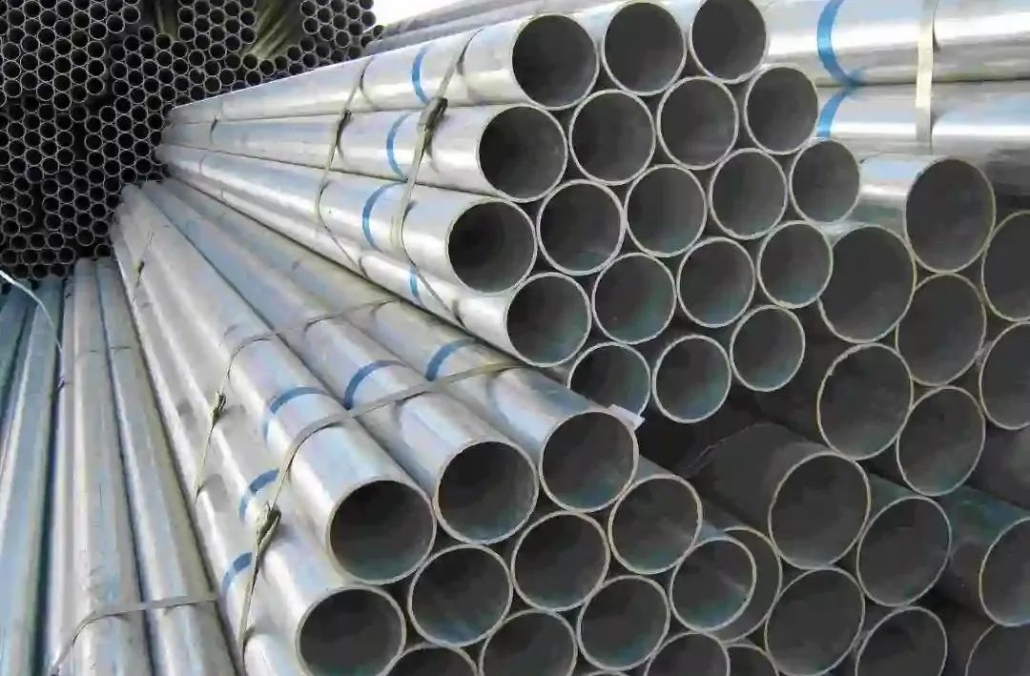“Zinc flowers” Of Hot-dip Galvanized Pipes
The hot-dip coating surface of seamless steel pipes will have crystallization patterns of the coating metal during solidification. This crystallization pattern is especially obvious for galvanized seamless pipes, showing the appearance of beautiful zinc crystals, thus becoming the appearance of hot-dip galvanized seamless pipes. This important feature is usually called “zinc flower”. When the galvanizing solution contains other metal impurities, zinc splatter occurs. The size and shape of zinc flowers depend on the type and amount of impurities contained in the galvanizing solution. Common impurities include lead, aluminum, antimony, bismuth, tin and other metals.
According to the size of the zinc flower diameter, it can be divided into the following three types:
1. Big Zinc Flower
The spangles with a diameter larger than 3mm that can be distinguished by the naked eye are called large spangles. Some people also call them normal spangles or natural spangles. The internationally recognized optimal size is 8~12mm.
2. Small zinc flower
Zinc flowers with a diameter of 1~2mm are called small zinc flowers. When the hot-dip galvanized seamless pipe comes out of the galvanizing pool and sprays water mist or zinc powder onto the unsolidified zinc layer, one water mist droplet and one zinc powder particle will form a crystallization center, causing zinc to bloom per unit area. As the quantity increases and becomes smaller, small zinc flowers that can be distinguished by the naked eye will form on the surface of galvanized seamless pipes. Traditionally, the products produced by this process are called small zinc flowers. Because this process often results in uneven zinc patterns, uneven surface color, and high production costs, this process is currently not widely used.
3. No zinc flowers
The zinc flowers on the pipe cannot be seen with the naked eye, which is called no zinc flowers, also known as zero zinc flowers. This is accomplished by controlling the chemical composition of the zinc liquid. When hot-dip galvanizing, only a certain amount of aluminum is added to the zinc liquid, without adding lead, antimony, or tin, to produce zinc-free products. This process does not increase equipment or production costs, and can achieve a uniform surface appearance. Therefore, this process has been widely promoted and applied around the world.
In nature, lead and zinc are symbiotic deposits. When pyrometallurgy is used, the density of liquid lead is higher in the lower part and the density of molten zinc is lower in the upper part, so they can be separated. However, the saturation concentration of lead in zinc liquid is 2%, so there is a large amount of lead in crude zinc. Hot-dip galvanizing has a history of more than 150 years. At that time, there was no modern refining technology, and only crude zinc was used for hot-dip galvanizing production. Because lead was mixed into the zinc liquid, zinc spatter would definitely appear on the hot-dip galvanized pipe. Therefore, for a long time, there has been a misconception that hot-dip galvanized seamless pipes must have zinc flowers. Without zinc flowers, it is not a hot-dip galvanized seamless pipe. In fact, from the perspective of long-term use, the performance of hot-dip galvanized seamless pipes without zinc flowers will be better.


Hinterlasse einen Kommentar
An der Diskussion beteiligen?Hinterlasse uns deinen Kommentar!